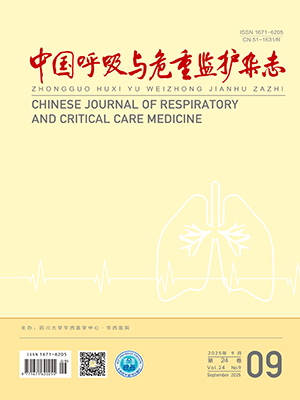Objective To assess the changes of cardiac autonomic nerves’s function in patients underwent bronchofiberscopy by observing the dynamic electrocardiogram ( DCG) and heart rate variability ( HRV) , and investigate the effect of different preoperative medications on heart function.
Methods Eighty patients underwent bronchofiberscopy were randomly divided into three groups according to different anaesthesia. Group A ( n =30) were local anaesthetized by nebulized lidocaine, group B ( n = 30) received atropine 1 mg injection intramuscularly and nebulized lidocaine, group C ( n = 20) were anaesthetized by
propofol intravenously. The DCG and HRV of three groups were mornitored at pre-inductive point( T0 ) , post inductive point ( T1 ) , point during the operation ( T2 ) , and point after operation ( T3 ) .
Results The incidences of ST-T change, tachycardia, and bearing premature in group A and B were increased. The incidence of tachycardia in group C was also increased, but lower than group A and B while the ST-T change and bearing premature were milder ( P lt;0. 05) . Episodes of bradycardia occurred 3 times in group A and
none in group B and C ( P lt;0. 01) . The low-frequency ( LF) , high-frequency ( HF) , total power ( TP) in group A and B were raised, but the LF was highly raised, and the LF/HF and HRV significantly decreased.The LF/HF and HRV decreased lightly in group C ( P gt; 0. 05) .
Conclusions Bronchofiberscopy examination can decrease HRV and induce arrhythmia and ST-T change, but also excite vagus nerve. Atropine can inhibit the excitability of vagus nerve and have no influence on HRV. The propofol may obviously decrease the sympathetic nervous activation, balance sympathetic and vagus nerves, which is beneficial to the stability of hemodynamics.
Citation: CHEN Bin,XU Weiguo,LI Hui,ZHU Jing. Changes of Dynamic Electrocardiogram and Heart Rate Variability in Patients Underwent Bronchofiberscopy and Effects of Different Preoperative Medication. Chinese Journal of Respiratory and Critical Care Medicine, 2012, 11(5): 484-488. doi: Copy
Copyright © the editorial department of Chinese Journal of Respiratory and Critical Care Medicine of West China Medical Publisher. All rights reserved




